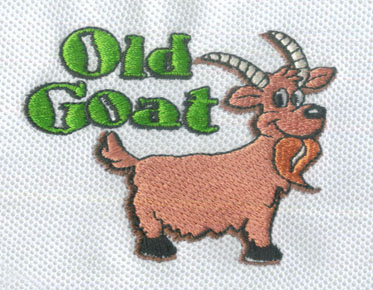What are the Main Stitch Types During Embroidery Digitizing Your Design
Embroidery digitization is a fascinating craft that allows us
to transform digital designs into intricate, stitched masterpieces. One of the
key aspects of this process is understanding the various stitch types and
knowing when to use each one. In this article, we'll explore the main stitch
types and shed light on their applications. Additionally, I'll introduce you to
Eagle Digitizing, a trusted provider of professional digitization services.
I. Understanding the Main Stitch Types:
1. Run Stitches: Versatility and Precision
Run stitches are the building blocks of embroidery digitizing. They consist of
single straight stitches and can be used for small details, placement stitches,
underlays, and more. As a digitizer, I often rely on run stitches to create
intricate designs and add precise details that enhance the overall visual
appeal of the embroidery.
2. Satin Stitches: Elegance and Borders
Satin stitches are long, smooth stitches that create a polished and elegant look. They are ideal for borders, appliqué designs, and covering larger areas. Satin stitches can be adjusted in width and density to achieve the desired effect. At Eagle Digitizing, our professional digitizers understand the art of satin stitches and can help you choose the perfect width and density for your design.
3. Fill Stitches: Adding Texture and Depth
Fill stitches are used to cover larger areas
with a solid field of stitches. They provide texture, depth, and visual
interest to embroidery designs. There are various types of fill stitches,
including tatami, brick, and embossing. Each type offers unique effects and can
be selected based on the desired style and artistic expression of the design.
II. Choosing the Right Stitch Type:
Selecting the appropriate stitch type depends
on several factors, including the design elements, fabric type, and intended
visual impact. Here are some guidelines to consider:
A. Complexity of Design: Intricate designs
with fine details may require the use of run stitches to ensure precision and
clarity.
B. Borders and Outlines: Satin stitches are
commonly employed for creating borders, outlining shapes, and adding a touch of
sophistication to the design.
C. Large Filled Areas: Fill stitches are ideal
for covering larger areas, providing texture, and adding dimension to the
design.
III. Eagle Digitizing: Unleashing Your Design Potential
When it comes to embroidery digitization, Eagle Digitizing is your trusted partner. Our team of skilled digitizers has in-depth knowledge and expertise in selecting the right stitch types for your designs. We understand the nuances of each stitch type and can help you bring your creative vision to life.
With Eagle Digitizing's professional digitization services, you can unlock the full
potential of your designs. We ensure meticulous attention to detail, capturing
every intricacy and maintaining the integrity of your artwork. Whether you're
an individual designer, a business owner, or an embroidery enthusiast, our
services cater to your unique requirements.
Conclusion:
Understanding the main stitch types and their
applications is crucial in embroidery digitizing. By choosing the right stitch
type for each design element, you can achieve stunning results that capture the
essence of your vision. When it comes to digitization services, Eagle
Digitizing stands out as a reliable and knowledgeable partner. We are dedicated
to providing exceptional embroidery digitizing services, empowering you to unleash your design potential.
Embark on your embroidery digitization journey
with confidence, knowing that Eagle Digitizing is here to assist you every step
of the way. Let us help you turn your digital designs into captivating stitched
creations that leave a lasting impression.



